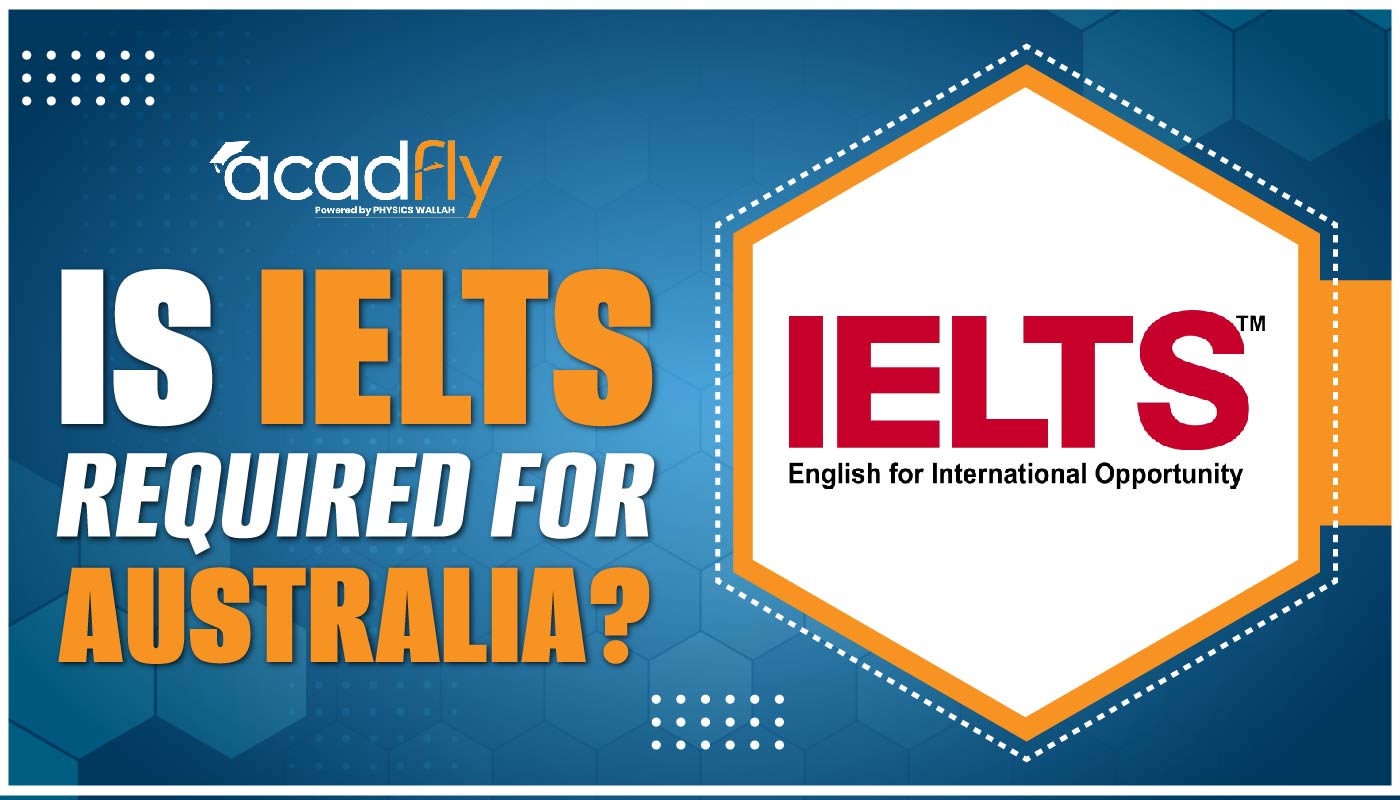

When it comes to demonstrating English language proficiency, the IELTS and TOEFL are two of the most widely recognized tests. Whether you're applying to universities, seeking a visa, or aiming for career advancement, choosing between these two exams can be challenging. This comprehensive guide will explore the differences and similarities between IELTS and TOEFL, helping you make an informed decision based on acceptance, difficulty, scoring, sections, and syllabus.
Understanding IELTS and TOEFL
TOEFL and IELTS are both English proficiency tests used for university admissions and immigration. TOEFL scores range from 0 to 120, while IELTS scores range from 1 to 9. Generally, a TOEFL score of 80-100 is roughly equivalent to an IELTS score of 6.5-7.5, though exact comparisons can vary by institution.
|
Aspect |
IELTS |
TOEFL |
|
Full Name |
International English Language Testing System |
Test of English as a Foreign Language |
|
Administered By |
British Council, IDP: IELTS Australia, Cambridge Assessment English |
Educational Testing Service (ETS) |
|
Purpose |
Higher education, immigration |
Academic purposes, including university admissions |
|
Skills Assessed |
Listening, Reading, Writing, Speaking |
Listening, Reading, Writing, Speaking |
|
Test Format |
Paper-based or Computer-based, with a face-to-face speaking test |
Computer-based (with some exceptions for paper-based tests) |
|
Test Duration |
Approximately 2 hours 45 minutes |
Approximately 3 hours |
|
Acceptance |
Widely accepted by universities and institutions worldwide, including the UK, Australia, and Canada |
Widely accepted by universities and institutions worldwide, particularly in the US |
|
Scoring |
Band scores from 1 to 9 |
Scores from 0 to 120 |
This table provides a quick overview of the key differences and similarities between IELTS and TOEFL.
TOEFL vs IELTS: Which is More Accepted?
Both the IELTS and TOEFL are widely accepted English proficiency tests used for university admissions and immigration. The choice between them often depends on the specific requirements of the institution or country you're applying to. Generally, IELTS is preferred in the UK and Commonwealth countries, while TOEFL is commonly accepted in the US and Canada.
Global Recognition
When choosing between IELTS and TOEFL, one crucial factor is how widely accepted each test is.
IELTS: This test is accepted by over 11,000 organizations worldwide, including universities, employers, and immigration authorities. It is particularly popular in the United Kingdom, Australia, Canada, and New Zealand. If you're looking to study or migrate to these countries, IELTS might be more advantageous.
TOEFL: TOEFL is recognized by more than 11,000 institutions across over 150 countries. It is especially popular in the United States and Canada. If you're aiming for universities in these countries, TOEFL could be a better option.
Specific Institution Preferences
Some institutions have a preference for one test over the other. For example, many universities in the U.S. have historically preferred TOEFL scores, while institutions in the UK and Australia might lean towards IELTS. It is always a good idea to check the specific requirements of the universities or organizations you're interested in.
IELTS vs TOEFL: Which is Easy?
IELTS and TOEFL are both tests for proving English skills, but which is easier can depend on your strengths. IELTS might be easier for those who are better at conversational English, while TOEFL might suit those who excel in American academic English and are comfortable with computer-based tests.
Test Format and Difficulty
IELTS: The IELTS test is available in two formats: Academic and General Training. The Academic version is for those applying to higher education institutions, while the General Training version is for immigration and work purposes. The test includes a face-to-face speaking section, which some candidates find more challenging due to the direct interaction with an examiner.
TOEFL: The TOEFL is entirely computer-based and includes a speaking section that is recorded rather than spoken face-to-face. Some candidates find the TOEFL easier due to its computerized format, which allows for more flexibility in answering questions.
Subjective Experiences
The ease of either test can be subjective and depends largely on your strengths and preferences. For example, if you are more comfortable with face-to-face communication, IELTS might be easier for you. Conversely, if you prefer typing responses and are comfortable with a computer-based format, TOEFL might suit you better.
TOEFL vs IELTS Score Comparison
When comparing IELTS and TOEFL scores, it's important to know that each test has its scoring system. IELTS scores range from 1 to 9, while TOEFL scores range from 0 to 120. Generally, a high score on one test doesn't directly translate to a high score on the other, so it's crucial to understand the conversion scales if you're applying to institutions that accept both tests.
Scoring Systems
IELTS: The IELTS scoring system ranges from 0 to 9, with each band corresponding to a level of English proficiency. The scores are reported for each section (listening, reading, writing, speaking) and an overall band score is given.
TOEFL: The TOEFL scoring system ranges from 0 to 120. Each section (listening, reading, writing, speaking) is scored out of 30, and the total score is the sum of these individual scores.
Interpreting Scores
IELTS: A score of 6.5 or higher is generally considered good for university admissions, though some institutions may require higher scores depending on their standards.
TOEFL: A score of 80 or above is often considered acceptable for university admissions, but competitive programs may require higher scores.
TOEFL vs IELTS Sections
IELTS and TOEFL are both English proficiency tests, but they differ in format. IELTS has four sections: Listening, Reading, Writing, and Speaking, with a focus on everyday language use. TOEFL also includes Listening, Reading, Writing, and Speaking, but it is entirely computer-based and emphasizes academic English.
|
Section |
IELTS |
TOEFL |
|
Listening |
Includes four recordings with conversations and monologues on various topics. Test-takers answer questions based on these recordings. |
Includes academic lectures and conversations. Test-takers answer questions based on these recordings. |
|
Reading |
Consists of 40 questions based on three reading passages, including descriptive and analytical texts. |
Features passages from university-level textbooks. Test-takers answer questions about content, vocabulary, and overall understanding. |
|
Writing |
Includes two tasks: writing a descriptive report or essay based on provided information, and writing an argument or opinion essay. |
Includes two tasks: an integrated task based on a reading and listening passage, and an independent task where you write an essay on a given topic. |
|
Speaking |
A face-to-face interview with an examiner is divided into three parts: an introduction and interview, a long turn where you speak on a topic, and a discussion on the topic. |
Computer-based, with test-takers responding to prompts. Responses are recorded and scored by raters. |
This table highlights the key differences in the format and focus of each test’s sections.
TOEFL vs IELTS Syllabus
The IELTS and TOEFL are both English proficiency tests, but they have different formats and focus areas. IELTS includes a variety of question types and is known for its speaking test with a real person, while TOEFL primarily uses multiple-choice questions and is computer-based. Both tests assess reading, writing, listening, and speaking skills, but their styles and question formats differ.
|
Aspect |
IELTS |
TOEFL |
|
Syllabus Focus |
Assesses practical English skills in real-life contexts, including academic and professional settings. Emphasizes understanding and producing language in written reports and spoken arguments. |
Assesses academic English proficiency with a focus on university-level coursework. Includes tasks like listening to lectures and writing essays based on academic readings. |
|
Preferred Regions |
Often preferred in the UK and Australia. |
More commonly accepted in the US and Canada. |
|
English Variety |
British English. |
American English. |
|
Test Format |
Includes face-to-face speaking tests and various written and listening components. |
Computer-based with a focus on integrated reading, listening, and writing tasks. |
|
Personal Preferences |
Choose if you prefer face-to-face interactions or British English. |
Choose if you are comfortable with computer-based tasks and American English. |
|
Test Availability |
Offered globally; check for specific dates and locations. |
Offered globally; check for specific dates and locations. |
|
Preparation Resources |
Consider resources specific to IELTS preparation. |
Consider resources specific to TOEFL preparation. |
This table should help you weigh your options and choose the test that best fits your needs and preferences.
Frequently Asked Questions
1. Which test is more widely accepted, IELTS or TOEFL?
2. Which test is easier, IELTS or TOEFL?
3. How do IELTS and TOEFL scores compare?
4. What are the main sections of the IELTS and TOEFL tests?
5. How do the syllabi for IELTS and TOEFL differ?









